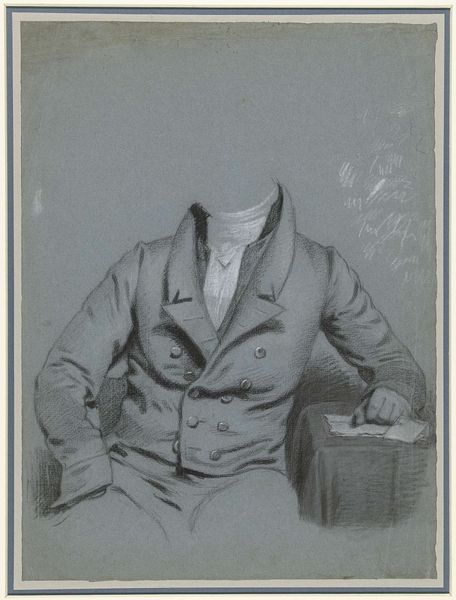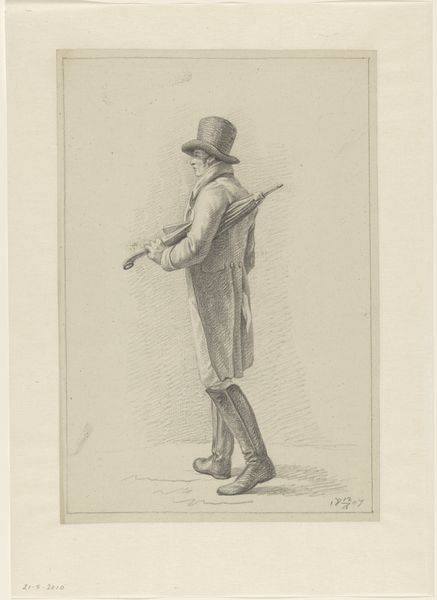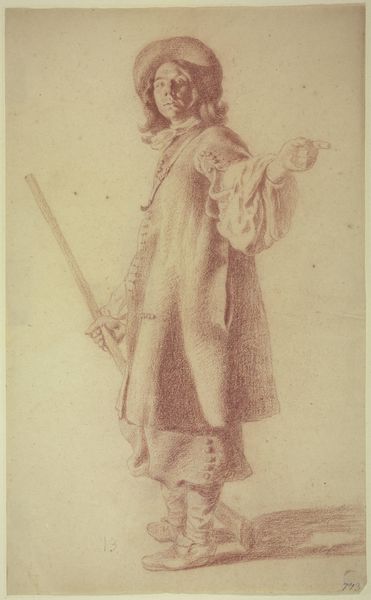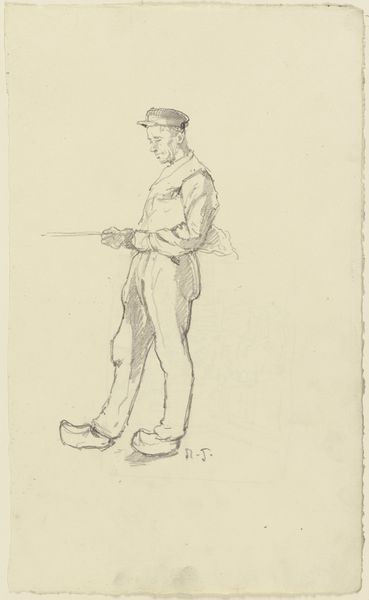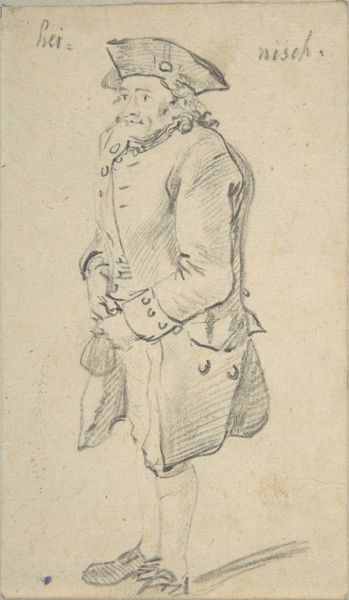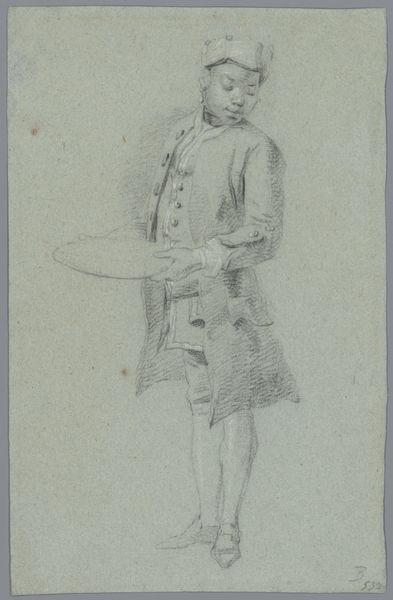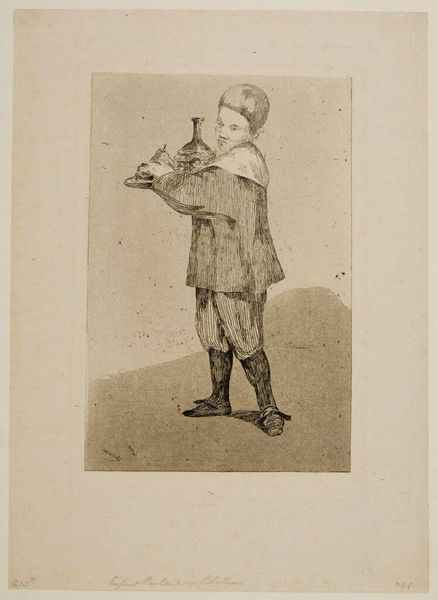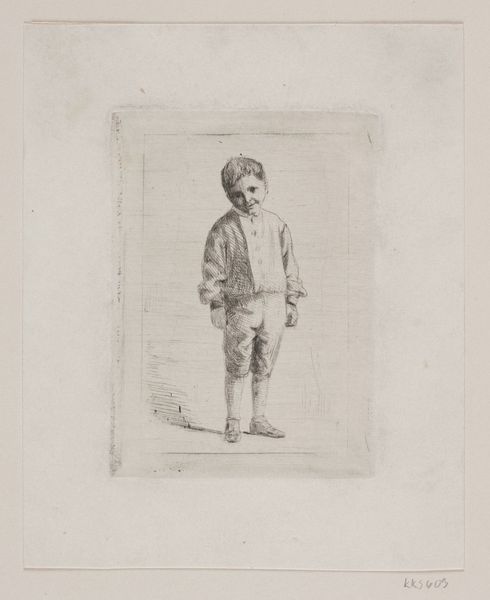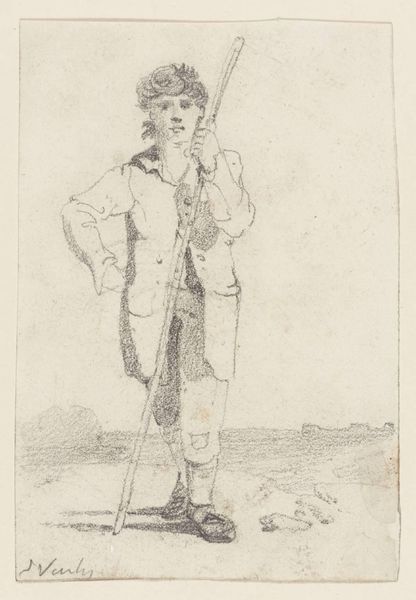
drawing, pencil
#
portrait
#
drawing
#
neoclassicism
#
pencil sketch
#
pencil drawing
#
pencil
#
academic-art
#
watercolor
Dimensions: height 481 mm, width 323 mm
Copyright: Rijks Museum: Open Domain
Editor: This is "Studie van onbekende jongen, staande met fluit," or "Study of an unknown boy, standing with flute" by Charles Howard Hodges, made between 1774 and 1837. It's a pencil drawing, and I find the lack of a defined face quite striking and almost unsettling. What do you see in this piece? Curator: What strikes me is the undeniable vulnerability conveyed despite the absent face. The incomplete nature of the work becomes a powerful statement itself. We can consider the power dynamics inherent in portraiture of the era. Who was deemed worthy of representation? What did it mean to be "unknown," especially a young person? Editor: That's a good point. The incompleteness definitely adds another layer to it. So, by not completing the face, is Hodges making a statement about class, or perhaps individuality itself? Curator: Precisely! We might ask, is the ‘unknown boy’ representative of a larger group historically rendered invisible? Neoclassicism, the art style of the time, valued reason and order, but did that extend to societal equity? Was there room for everyone in that world, or only a select few? The boy holds the flute, signifying refinement, education perhaps, but these aspirations were not accessible to everyone in that era, were they? Editor: Not at all. So the artwork, despite being unfinished, hints at larger social inequities. It’s fascinating how much the artist can communicate, even without completing it in full detail! Curator: Absolutely! It forces us to question what "completeness" really means, and who gets to define it, in art and in society. Art often thrives on ambiguity and it prompts questions instead of answering. Editor: I hadn't considered all those things before. Now, I see it in a completely new light. It's no longer just an unfinished drawing but a powerful social commentary. Thanks!
Comments
No comments
Be the first to comment and join the conversation on the ultimate creative platform.
